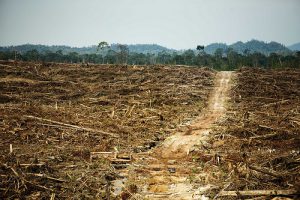South Korea’s KEXIM Bank recently became the first Asian company to issue a “green bond”, a type of financial instrument which raises money exclusively for environmentally friendly projects like wind farms and clean water schemes.
The appetite for it proved immense. When the US$500 million KEXIM bond came to market, investors clamoured to invest over three times that amount. Orders reached US$1.8 billion. “They left some hungry investors out there,” the NGO Climate Bonds Initiative (CBI) reported.
Investors were also willing to pay over the odds for the privilege of owning these climate-friendly bonds, essentially IOUs to green investment companies. They paid a higher price for these green bonds than the trading price of the outstanding KEXIM bonds in the market. And, in the bond world, when investors pay a higher price, it means they are accepting lower interest payments over the life of the bond.
What is so special about these bonds that investors have been left wanting more and paying more, even in a weakened global economic environment?
Some say they are seen as a low-risk way to put money into the environment. Investors are “unlikely to invest capital directly into individual projects,” because direct investment would expose them “to regulatory uncertainty and technology risk,” Aaron Bielenberg, founder of the Clean Energy Business Council, noted in a presentation about financing the clean energy sector.
Instead, green bonds allow investors to lend to larger, less-risky companies, which in turn invest in multiple green projects. This way the investors do not have to analyse and take on the risks of individual projects.
Others argue that people are simply increasingly inclined to invest in green products. “Green is now an attractor,” says CBI chief executive Sean Kidney. “There is no doubt that there is pent-up consumer demand for action on environmental issues.”
The first green bond was issued in 2008 by the World Bank, which developed the financial instrument as a means of raising funds that seek to mitigate climate change. Since then, most green bonds have been issued by AAA-rated multilateral organisations.
The KEXIM issuance is seen as a little riskier: while still highly rated by rating agencies, is not the highest grade and is less secure than the typical supranational bank green bonds. That investors were still very keen demonstrates the wider demand, a report released by Bloomberg’s New Energy Finance group noted last month.
Several smaller, climate-themed bond offerings in the region have followed KEXIM’s bond: a geo-thermal energy company in Indonesia, a wind energy company in India and a geo-thermal energy company in the Philippines have all sought to finance expansion plans or new projects this way.
“The market for green bonds is on pace for a record year. Oversubscription is pervasive as investor demand for both project and supranational green bonds outstrips supply,” the Bloomberg report said.
Worsening pollution an incentive for investors
Now investors sense opportunity in Asia’s rapidly industrialising and smog-filled cities. Their hope: Asian policymakers will get increasingly serious about the environmental crisis, boosting the market for non-polluting energy sources. The half-a-billion dollar KEXIM green bond testifies to this.
Asia’s air quality problems in particular provide an increasing incentive for action. The World Health Organisation’s Global Burden of Disease report put air pollution in the top 10 killer diseases list for the first time last year, noting that it kills “1.2 million people a year in East Asia and China, and 712,000 in South Asia, including India.”
China has seen widespread public campaigns for greater access to air quality data thanks to stretches of severe smog, including a winter of the worst air pollution Beijing had ever seen – dubbed “airpocalypse” – this year. The impacts stretch beyond the Chinese capital. “Beijing is just one of hundreds of cities, largely in Asia, where poisonous air is now the fastest growing cause of death in urban populations,” said The Lancet magazine.
Commentators have been quick to point out that widespread investor interest in green projects in Asia is not guided by altruism, but by a sense of where money can be made. "It is not done out of a warm and fuzzy, tree-hugging feeling; there is a real investment case underlying these investments,” Helga Birgden, Mercer Asia-Pacific head of responsible investment, told InvestorDaily.
That investment case has been boosted by government signals. Last year China, already the world’s biggest spender on renewable energy, bolstered its Green Credit Guidelines for financial institutions, which seek to divert loans away from polluting projects and promote low-carbon economic growth. Local Chinese media reported earlier this month that Beijing’s municipal government had launched a multibillion-yuan campaign to “tackle pollution”.
The other Asian giant, India, has set itself an ambitious target in its latest five-year plan of getting 12% of its energy requirements from renewable sources by 2017. Korea and Japan too have seen “swelling movements for renewables”, according to Kidney.
Such policy moves, he says, are indications that governments “will take action around climate investments, in supporting renewables, in supporting energy-efficiency in particular.”
Given two bonds that have similar risk and return profiles, investors will pick a bond that finances a climate-friendly project over a bond that finances an oil or coal company, says Kidney. “If you give them two bonds, which are investment-grade and suit their yield requirement, and one is green and the other is brown, what they tell me is that they will take the green in recognition of the macro risk of climate change.”
While this is still a nascent market, it’s growing. “This is a trend, which is happening on the periphery of the usual bond market,” Kidney says, “It is very clear that it’s there.”





